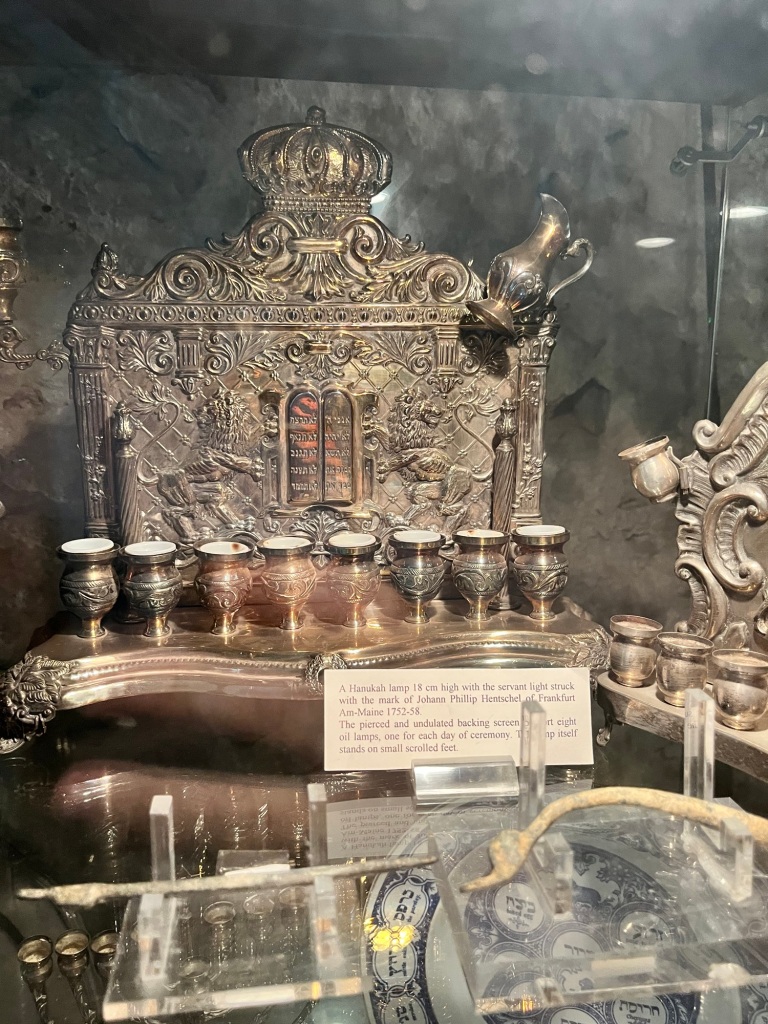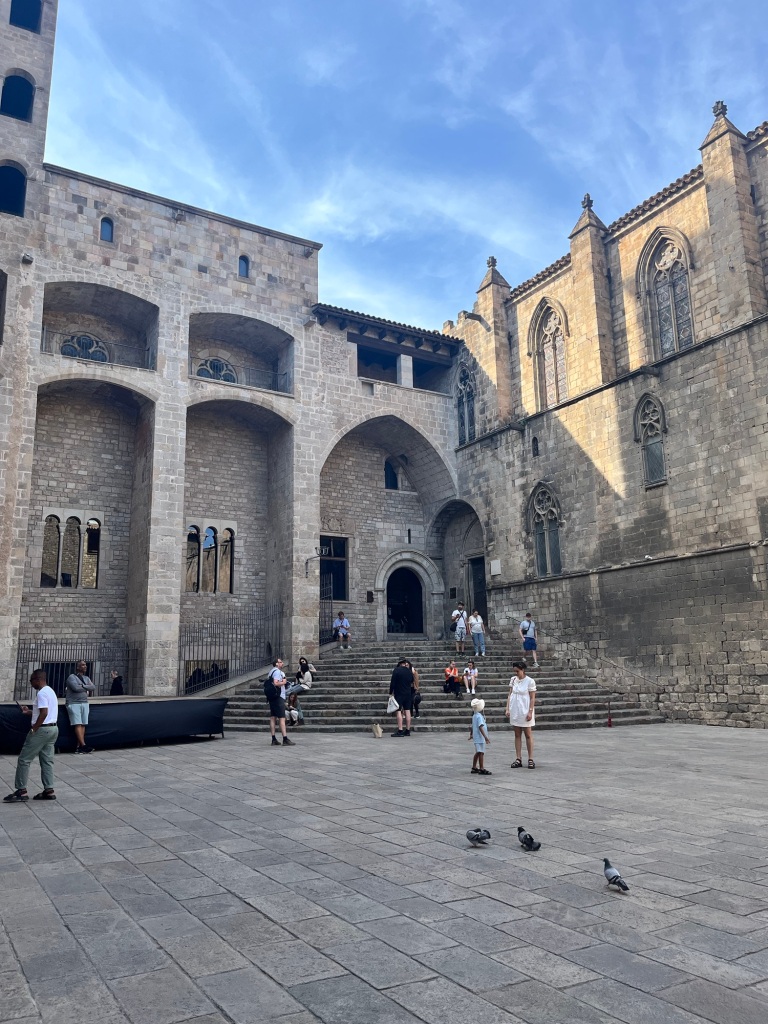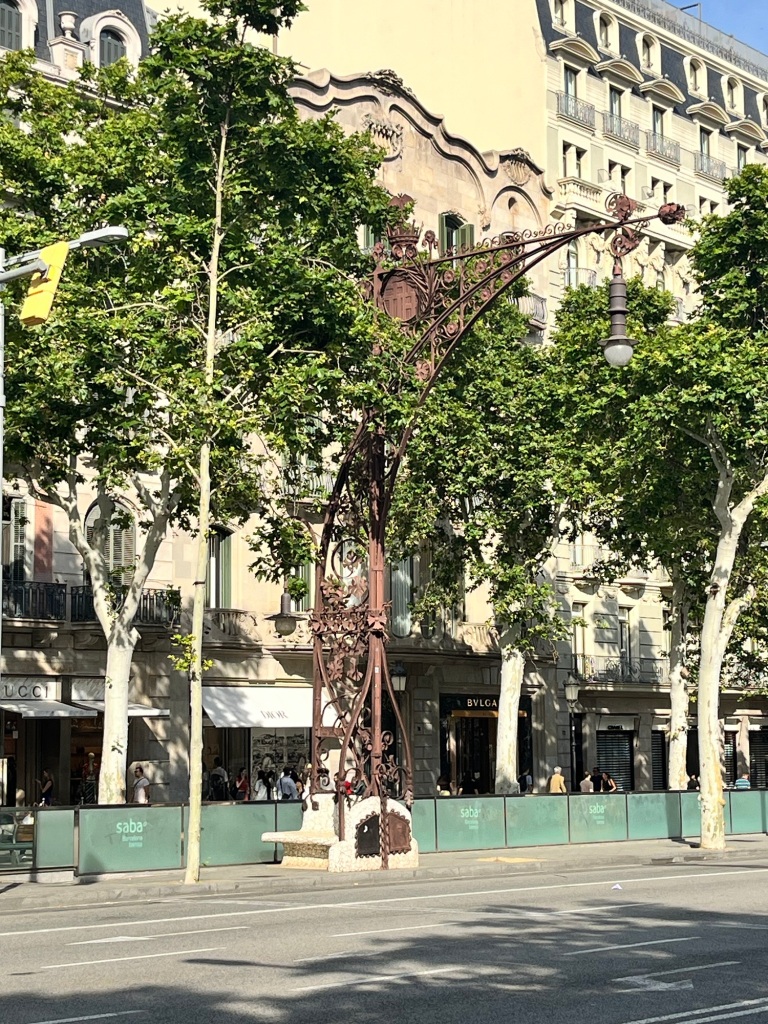I’ll confess that the last two days were pretty intense, and I hope I can keep track of it enough to give you the best parts. I feel like we saw most of the key points of the city already somehow, so I’m going to split this into a “basic Barcelona” post and then I’ll do one on Gaudi. Plus I’m still here for two more days! Though today we’re having a slower morning which I am very grateful for.
One of my favorite things about traveling with other people is that you do things that you might not have done on your own. My friend Ethan knew about a site called freetoursbyfoot.com that he has used in many cities, so we did the Barcelona one. The guides work for free and are only paid based on how you “tip” them at the end. I have mixed feelings about it because I’m sure some people stiff the guides, but I certainly would not be that person.
Barcelona, like many other places in the area, started as a Roman outpost in the 1st century CE by Emperor Augustus (though of course there are Neolithic settlements prior to that here). The original walls of the outpost were destroyed in the 19th century as Barcelona experienced an explosive expansion. There are 4 towers that still exist. Of course there are also remains of the Roman Temple of Augustus. When the Visigoths conquered the area, they dismantled most of the structure for use in other buildings. These are what remain in situ or were found elsewhere and replaced.


The Barcelona Cathedral was built between the 13th and 15th centuries, but the facade we see at the front today was added in the 19th century in the neo-gothic style. The original front was supposedly built in what is called an Aragonese Gothic style, you can find pictures of it online, it’s a much more simple gothic look that the current structure.


The old part of Barcelona includes some difficult modern history. Here at the Plaza de Saint Philip Neri, you can see signs of a bomb that was dropped during the Spanish Civil War from 1936-1939. The building on the left was an orphanage where over 40 children were killed.

During the Middle Ages. Barcelona had a thriving Shephardic Jewish community. Persecution of this community began shortly after the Black Plague bevan, Jews were blamed for the deaths partially because the plague didn’t impact them as much. For the Spanish Christian groups at the time, cleanliness was NOT next to Godliness, so much so that Queen Isabella said she only bathed twice in her entire life! In contrast, Jewish rituals require weekly bathing, which has the added benefit of helping stave off diseases. As the Jewish population was run out of Barcelona (or massacred really), much of their history was erased or hidden over time. Some time in 1987, a historians went looking for synagogues and found this building. How do the know it was a synagogue. The wall that faces Jerusalem is one hint on the outside, especially since it didn’t follow the pattern of the other buildings in the area, but the place for the Mezuzah is a major giveaway.

We went back to the synagogue the next day because I wanted to go inside, and I’m so glad we did! It turns out that it was established as a synagogue in the 3rd century!!! Part of the original wall and keystone can be seen with the Roman Numeral 18, which in Hebrew stands for life, a dead giveaway that this was for sure a synagogue!

The building is quite small now, but even at its biggest, it was not allowed to be larger than the smallest church.


All of the artifacts inside were donated from other places, the Torah scroll here was found in a Moroccan flea market. It’s technically not a kosher document though because it was never completed.




Of course we can’t be in Barcelona and not have some Columbus history. Here is the Chapel of Saint Aragon where Columbus presented his gifts to Ferdinand and Isabella after his first voyage to the Americas.

The Patron Saint of Barcelona is Saint George (who slayed a dragon, saving a princess and a town from the extortions of the dragon. There are signs of the story all over Barcelona (including one of Gaudí’s houses which I’ll show in the next post).

I think this post is getting unwieldy, so I’ll leave you with some pictures from outside of the old city, It’s such a beautiful city filled with amazing architecture and history everywhere you turn!










I could read about this all day. So glad you and the guys are having a great time!
LikeLike